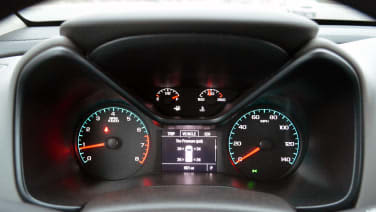
- 13 GM models place in Top 3 of their segments
- Buick ranks second among all brands in study
- Chevrolet, GMC sweep Large SUV segment and rank first and second in both large truck pickup segments
By General Motors, Detroit - For the first time, Chevrolet, Buick, GMC and Cadillac all rank in the top 10 among brands in the J.D. Power Vehicle Dependability Study.
"GM's customer-driven approach to quality and dependability is breaking through," said Grace Lieblein, vice president, Global Quality. "Dependability is a top purchase consideration and key to customer loyalty. These awards reflect our commitment to provide customers with the best overall experience in the industry."
The 2015 study tracks 2012 model year vehicles in their third year of ownership.
Buick ranks second among all brands, Cadillac ranks fourth with Chevrolet and GMC ranking 10th (in a tie).
Chevrolet ranks higher than ever in this study, led by Malibu as the segment leader in the highly competitive Midsize Car segment. For the third year in a row, the Chevrolet Camaro ranks highest in the Midsize Sporty Car segment.
The GMC Sierra LD and Chevrolet Silverado LD rank first and second in the Large Light Duty Pickup segment and the Chevrolet Silverado HD and GMC Sierra HD rank first and second in the Large Heavy Duty Pickup segment.
GMC Yukon, Chevrolet Tahoe and Suburban all rank in the Top 3 of the Large SUV segment. These models also filled the Top 3 positions in the Large SUV segment in the 2014 JD Power Initial Quality Study, where the 2014 Chevrolet Suburban and 2014 GMC Yukon ranked highest in a tie, along with the 2014 Chevrolet Tahoe.
Model Highlights by Brand
Chevrolet
"GM's customer-driven approach to quality and dependability is breaking through," said Grace Lieblein, vice president, Global Quality. "Dependability is a top purchase consideration and key to customer loyalty. These awards reflect our commitment to provide customers with the best overall experience in the industry."
The 2015 study tracks 2012 model year vehicles in their third year of ownership.
Buick ranks second among all brands, Cadillac ranks fourth with Chevrolet and GMC ranking 10th (in a tie).
Chevrolet ranks higher than ever in this study, led by Malibu as the segment leader in the highly competitive Midsize Car segment. For the third year in a row, the Chevrolet Camaro ranks highest in the Midsize Sporty Car segment.
The GMC Sierra LD and Chevrolet Silverado LD rank first and second in the Large Light Duty Pickup segment and the Chevrolet Silverado HD and GMC Sierra HD rank first and second in the Large Heavy Duty Pickup segment.
GMC Yukon, Chevrolet Tahoe and Suburban all rank in the Top 3 of the Large SUV segment. These models also filled the Top 3 positions in the Large SUV segment in the 2014 JD Power Initial Quality Study, where the 2014 Chevrolet Suburban and 2014 GMC Yukon ranked highest in a tie, along with the 2014 Chevrolet Tahoe.
Model Highlights by Brand
Chevrolet
- Malibu - Segment Award, Midsize Car
- Camaro - Segment Award, Midsize Sporty Car (3rd Year in a Row)
- Silverado HD - Segment Award, Large Heavy Duty Pickup
- Tahoe - Ranks Second, Large SUV
- Suburban - Ranks Third, Large SUV
- Silverado LD - Ranks Second, Large Light Duty Pickup
Buick
- Lacrosse - Segment Award, Large Car
- Enclave - Ranks Second, Midsize SUV
GMC
- Sierra LD - Segment Award, Large Light Duty Pickup (2nd Year in a Row)
- Yukon - Segment Award, Large SUV (2nd Year in a Row)
- Terrain - Segment Award, Compact SUV
- Sierra HD - Ranks Second, Large Heavy Duty Pickup
Cadillac
- SRX - Ranks Third, Midsize Premium SUV








